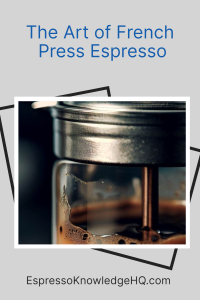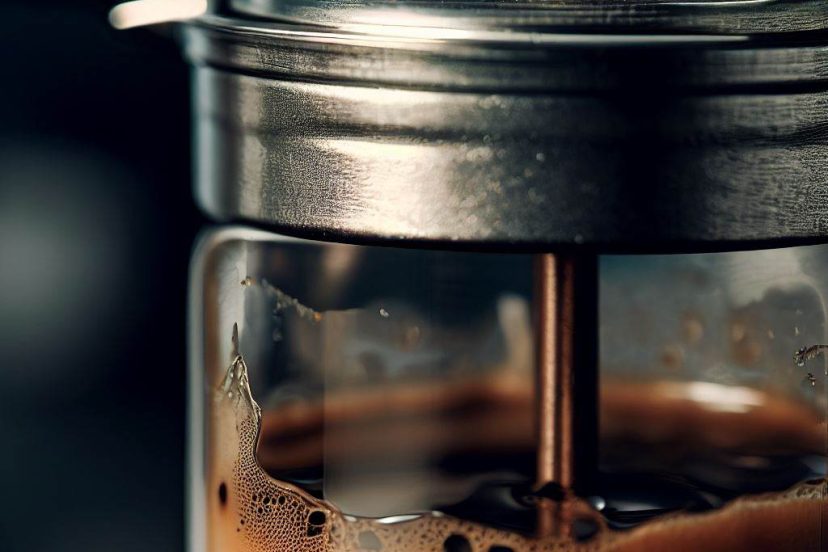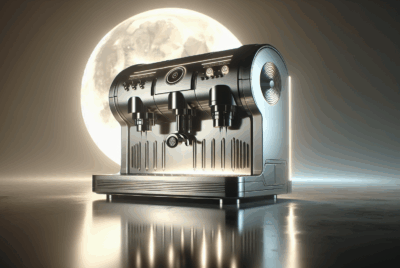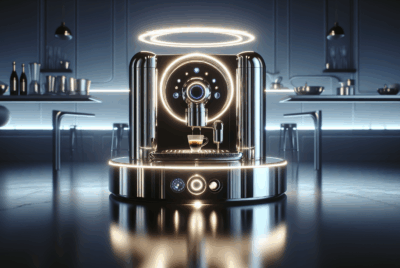French Press Espresso: Mastering the Art of Brewing at Home
As an Amazon Associate, I earn from qualifying purchases, at no additional cost to you. Disclaimer
Introduction to French Press Espresso
Hey coffee lovers! Do you enjoy the strong, rich flavors of an espresso but prefer the simplicity and charm of a French press? Well, then, you’re in the right place! This is your step-by-step guide to making a perfect French press espresso right at home.
Understanding Espresso and French Press
Pour yourself a cup of your favorite brew and settle in, folks! We’re about to delve deeper into the heart of coffee – French Press Espresso. You see, I’ve had countless experiences with both, and I’ll be sharing some of those with you today. Hopefully, my tales will help you better appreciate these two styles of coffee and even assist you in making an informed decision about your preferred brewing method.
To put it simply, Espresso and French Press are two of the most popular brewing methods amongst coffee aficionados, myself included. Let’s take a moment to appreciate each one.
The espresso, to start, is something of an icon in the coffee world. It’s the fuel behind countless early mornings and long nights, a quick yet powerful caffeine punch that has helped me power through many a deadline. This highly concentrated form of coffee, often enjoyed in “shots,” is more than just a quick pick-me-up, though. It’s the base for many popular coffee drinks we all love, like lattes, cappuccinos, and Americanos.
Difference between Espresso and French Press
Okay, so how do these two methods compare? Both produce delicious coffee, no doubt, but they do so in very different ways.
An espresso shot is like a concentrated coffee essence. It’s bold, intense, and rich, with a delightful crema on top – if done right. It’s the kind of drink that hits you with a robust flavor burst that I often find quite invigorating. However, it does require an espresso machine, which can be an investment, both financially and in terms of learning how to use it properly.
On the other hand, French press coffee offers a fuller, more rounded flavor profile. It’s less concentrated than espresso but is incredibly versatile. Plus, it doesn’t require any expensive or complicated machinery. You just need your French press pot and a bit of patience to let the coffee steep.
The beauty of a French Press, though, is that it’s capable of brewing a strong, espresso-like coffee. While it may not technically be an espresso, as it lacks the characteristic pressure extraction, this brew carries a depth and robustness that’s truly satisfying for espresso lovers.
Why Opt for French Press Espresso?
So, now you know about the French press and espresso, but why would you opt for a French press espresso? I’m glad you asked because this is where we dig into the exciting world of unconventional coffee brewing methods.
I remember the first time I tried making espresso with a French press. It was a winter morning, and my espresso machine decided to call it quits. I craved a strong cup of coffee, something to kick start my day with gusto. With a bit of improvisation and coffee enthusiasm, I decided to experiment with my trusted French press. And, oh boy, was I in for a treat!
Uniqueness of French Press Espresso
A French press espresso combines the richness and intensity of espresso with the simplicity and full-bodied flavor of French press coffee. It’s not about trying to replicate the exact taste of espresso; instead, it’s about creating a unique coffee experience.
A French press espresso has a slightly different flavor profile compared to a traditional espresso. It maintains the bold and robust character of an espresso but incorporates the unique nuances of a French press brew. I love this fusion, as it creates a unique coffee experience.
When making espresso in a French press, you also have more control over your brew compared to using an automatic espresso machine. You can adjust the steeping time, water temperature, and coffee-to-water ratio to suit your personal preference. It’s like being your own barista!
Economical Aspects of French Press
Another reason to consider making espresso with a French press is the cost-effectiveness. If you, like me, love a great cup of coffee but also appreciate saving a penny or two, the French press is an excellent option.
Investing in a good espresso machine can be quite costly. And let’s not forget the cost of maintaining it. On the other hand, a French press is relatively inexpensive and lasts a long time with proper care. Also, it doesn’t require any electricity, making it an energy-efficient choice.
From my experience, brewing espresso with a French press is also a fun and satisfying way to experiment with coffee brewing. And, believe me, when you sip that perfectly brewed, homemade French press espresso, you’ll appreciate the economical and delicious choice you’ve made!
Step-by-Step Guide to Making French Press Espresso
Are you eager to try making French press espresso now? I can feel your excitement! I still remember the thrill of making my first French press espresso. It was a bit of an experiment, filled with anticipation, and the result was a delightful surprise. Now, let’s dive into the process and get you brewing!
Choosing the Right Coffee Beans
The journey towards a great cup of French press espresso begins with choosing the right coffee beans. I can’t stress enough the importance of this step. You see, coffee beans are the heart and soul of your brew. They dictate the flavor, aroma, and overall quality of your espresso.
When it comes to making French press espresso, I prefer using dark roast beans. Dark roast beans, like French or Italian roasts, are perfect for mimicking the strong and rich flavor of traditional espresso. Of course, this doesn’t mean you can’t experiment with other roasts. Feel free to play around with different types until you find the one that suits your taste buds best.
Remember to buy whole beans and grind them yourself just before brewing. This ensures you get the freshest flavor in each cup. If you’re new to this, don’t worry, it’s a learning process, and soon enough, you’ll be a coffee grinding pro.
Grind Size and Consistency
Once you have your beans, it’s time to grind them. The grind size and consistency can make or break your coffee. It determines how the water interacts with the coffee grounds during brewing, affecting the extraction rate and, ultimately, the taste of your coffee.
For a French press, a coarse grind is typically recommended. But for our French press espresso, we’re aiming for something a bit different. To achieve that strong, concentrated espresso flavor, you’ll need a slightly finer grind. Think sea salt consistency.
When I first started, I had a few instances of over or under-extracting my coffee due to incorrect grind size. But with a little patience and practice, I managed to find the perfect grind for my French press espresso. Don’t be discouraged if you don’t get it right the first time; it’s all part of the coffee adventure.
Brewing Technique
Now comes the fun part – brewing your espresso! Trust me, the anticipation of watching your coffee steep is half the enjoyment. Here’s how to go about it:
First, add your coffee grounds to the French press. I usually use a ratio of 1:12 (coffee to water) for a strong brew. Feel free to adjust the ratio according to your taste preference.
Next, boil water in a kettle, then let it sit for a moment to reach the optimal temperature, about 195-205 degrees Fahrenheit. Pour the hot water over your coffee grounds, ensuring all the grounds are saturated.
Give your brew a gentle stir to ensure all the grounds are fully immersed in water. Then, place the lid on the French press but don’t plunge it yet. Let the coffee steep for around 4 minutes. Yes, waiting can be challenging, but trust me, it’s worth it!
After the steeping time, slowly and carefully press down the plunger. There you have it, your homemade French press espresso is ready! Pour it into your favorite cup and enjoy.
Tips and Tricks for Perfect French Press Espresso
Now that you have the basic steps down, let’s explore some tips and tricks that can help elevate your game. Remember, creating the perfect cup of coffee is a journey, not a destination. Along the way, you’ll learn, adapt, and discover things that make your brew uniquely yours. Let me share some of the things I’ve picked up on my journey.
Troubleshooting Common Issues
Even with all the right steps, you might sometimes find your coffee doesn’t taste quite right. Maybe it’s too weak, too bitter, or just not as you expected. That’s okay! Troubleshooting is an integral part of the brewing process.
If your coffee tastes too weak, consider using more coffee grounds or a finer grind. Alternatively, you could steep your coffee for a longer time. Conversely, if your coffee tastes too strong or bitter, use fewer coffee grounds, coarser grounds, or reduce the steeping time.
Remember that one time I mentioned when my coffee turned out bitter? I realized I was using a grind that was too fine, causing over-extraction. I adjusted my grinder to a coarser setting, and voila, the bitterness was gone.
Also, always ensure your water temperature is just right. If it’s too hot, you risk over-extracting your coffee, resulting in a bitter taste. Too cold, and your coffee may end up under-extracted and flat.
Brewing coffee is a personal and experimental journey. Feel free to tweak and adjust as you go along until you find what works best for you. Remember, each cup is a new opportunity to learn and perfect your brew.
Exploring Different Espresso Recipes with French Press
Here’s the thing about coffee: it’s versatile. There’s a world of recipes to explore once you’ve nailed the basics of making espresso. Let’s venture into that exciting territory, shall we? Whether you’re hosting a brunch or enjoying a quiet afternoon, these recipes I’m about to share can elevate your coffee experience.
The Classic Cappuccino
Who doesn’t love a good cappuccino, right? With a French press, you can make an at-home version that’s just as creamy and delicious. Here’s how I do it:
- Prepare your espresso as usual.
- Pour it into a large coffee cup, filling it about a third of the way.
- Heat some milk until it’s steaming but not boiling.
- Pour it into a clean French press.
- Plunge the French press filter up and down quickly to froth the milk.
- Be careful here; hot milk can be tricky!
- Pour the frothed milk over your espresso, holding back the foam with a spoon.
- Then, spoon the foam on top.
There you have it – a homemade cappuccino!
That first sip of my homemade cappuccino was a proud moment. It was a comforting balance of bold espresso and creamy milk, perfect for a cozy morning in.
The Robust Americano
Ah, the Americano – espresso’s milder cousin. It’s a simple but elegant recipe that highlights the flavor of your espresso.
- Prepare your espresso as usual.
- Pour hot water into a cup, filling it about halfway.
- Add your espresso to the cup of hot water.
Stir gently, and enjoy!
The first time I made an Americano, I was taken aback by how different it tasted from a traditional espresso. It was less intense, but in a good way. It allowed me to appreciate the subtler notes of my coffee.
The Sweet Mocha
Finally, let’s talk about the mocha, a delightful treat for all chocolate lovers. Here’s how you can make one at home:
- Prepare your espresso as you normally would.
- Warm some milk and add a couple of teaspoons of good-quality cocoa powder. Stir until the cocoa is well incorporated.
- Add the chocolate milk to your espresso.
- Give it a good stir, and top it off with a bit of whipped cream and a dusting of cocoa powder if you’re feeling indulgent.
The mocha was a game-changer for me. The combination of espresso’s boldness, milk’s creaminess, and cocoa’s sweetness was simply divine. Perfect for those days when you need a bit of pampering.
Remember, these are just starting points. Feel free to get creative and add your personal touch to these recipes. After all, the joy of coffee lies in the exploration and the personal journey you undertake with every cup.
Conclusion
Creating espresso with a French press might not be conventional, but it’s a delicious, satisfying way to enjoy coffee. It allows you to play with different flavors and techniques, all while keeping things simple and cost-effective. So go ahead, experiment, and most importantly, enjoy your coffee journey!
Frequently Asked Questions (FAQs)
1. Can I make real espresso with a French press?
No, you can’t make real espresso with a French press. Espresso requires pressure that a French press can’t provide. However, you can make an espresso-like coffee with a French press that’s strong and delicious.
2. Why does my French press espresso taste bitter?
Your coffee may be over-extracted. Try using less coffee, coarser grounds, or reducing the steeping time.
3. Can I use regular coffee beans for French press?
Absolutely! The type of bean can influence the flavor, so feel free to experiment.
4. How can I make my espresso stronger?
Use more coffee grounds, grind them finer, or increase the steeping time.
5. Can I make other espresso-based drinks with French press?
Yes, you can use your French press espresso as a base for other drinks like lattes or mochas. Just add milk, froth, or other ingredients as desired.





